Chain cut clusters can be created by SmartCluster. It uses a single cut to cut out a cluster of parts.
The use of chain cut reduces the number of pierces, thereby decreasing overall cut time. This leads to better plasma consumable life, and is especially beneficial for flame cutting where pierces are slow. Chain cutting is also less prone to parts tipping potentially causing tool crashes.
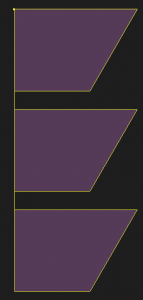 Example of using a chain cut |
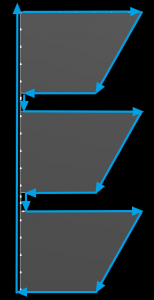 Path of a chain cut |
Bridge Overlap
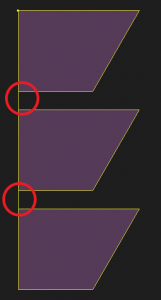
Between Parts there is a “Double Cut”
Between parts, there is a short segment joining the parts, but also the chain cut traveling in the other direction, apparently on top of each other. In theory the kerf left setting will separate the center lines of the two cuts such that their full kerf widths just touch. In practice there may be heat distortion, not perfectly square cuts and kerf errors that may leave some metal behind.
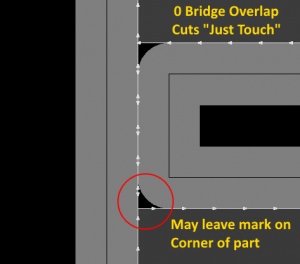
Bridge overlap gives us a way to control part separation
No bridge overlap should sever the piece, however there is a chance that the movement of the plate during cutting could result in the parts being tagged together. Further, as shown in the above picture, there may be a slight blemish on some parts.
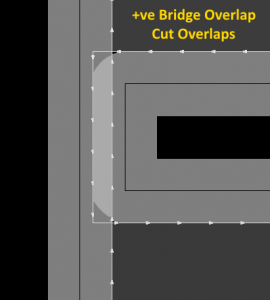
A positive bridge overlap ensures that the parts are fully severed as the kerf from the two cuts will overlap. This also means that there shouldn’t be blemishes on the parts. It still works well for flame cutting as the path does not completely overlap itself. A recommended value for this would be half of the kerf offset.
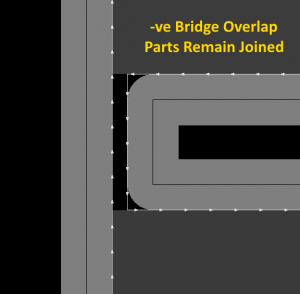
A negative bridge overlap does not sever the parts, rather it allows for the parts to remain tagged together and manually separated later.
Align Columns
This aligns the parts either left or right. The finishing length of the cut which severs the parts will also be on the selected side. It is recommended to align it left as the normal cutting sequence goes from right to left.

Chain Crop
Chain crop is similar to chain cut, but it also severs the plate. This is especially useful for plate dragger style machines which move the plate (and any scrap skeleton) around in order to make cuts. Unlike chain cut which uses a single cut, chain crop has 2 cuts, the second of which severs the plate.
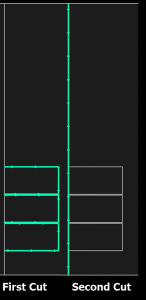
Align Columns
The alignment should normally be left as a normal cutting sequence goes from right to left, so a left crop line will cut off the skeleton to the right.
See Also